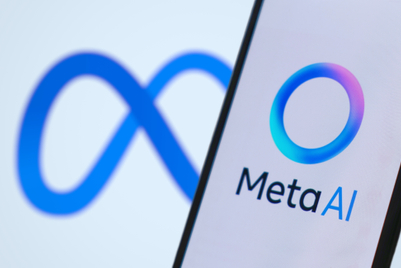
“Data is the new gold” is a much-cited mantra among digital marketers and advertisers alike. Today’s marketers rely heavily on user data to shape their campaign strategies, all in the name of driving greater personalisation to appeal to the right consumers at the right time. In fact, a significant component of campaign planning relies on data collected from past interactions with target audiences across multiple channels, be it online or offline.
With data no longer a luxury but a necessity, access to high-fidelity data points is now intrinsic to scalable, repeatable success. Of course, that's assuming that your database is built on authentic information collected from real consumers.
Beware of the bots
Ad fraud has long plagued the digital marketing ecosystem. In fact, more than one in five marketers believe that their customer databases are full of bots, based on a 2021 survey conducted by our partner HUMAN (previously known as White Ops). After all, as the advertising ecosystem has increased in complexity, so has the sophistication of tactics employed by bad actors. Today’s bots can now be engineered to mimic real user actions, from scrolling down a page to even filling out forms.
When undetected, these fake impressions can skew marketers’ findings and campaign results, and in turn, drive the wrong strategies for the next campaign. Furthermore, ad fraudsters trick marketers and publishers into paying them for fake impressions and ad inventory. The widespread implications can range from suboptimal campaign performance to billions of dollars of media spend going down the drain.
At the root of this problem lies the internet’s ever-enduring identity crisis which hardly spares even the tech giants commanding the lion’s share of the media landscape. Between October to December last year, Facebook had to remove 1.3 billion fake accounts. Meanwhile, artists on Spotify lose as much as US$300 million a year to fake streams.
The reality of the Open Web is simply this: It’s just not possible to verify the authenticity of each and every online identity unless it’s tied to a transaction that leaves behind some form of financial data trail, such as a product purchase or subscription of services.
As such, bots and resultant instances of ad fraud remain a modern-day disease born out of the internet’s identity crisis and the rampant digitalisation of data creation. Wiping them out of marketers’ systems requires more than one single solution. It's just not that simple.
A better slice: Unpacking the Swiss cheese model
Over time, individual players and industry bodies have unveiled solutions to try and curb the bot invasion. These point solutions naturally leave gaps in the system that are vulnerable to exploits. How we can make this work, however, is by layering these different solutions to mitigate the risks posed by fraud. We can call this the “Swiss Cheese” model.
Commonly used by organisations when addressing safety protocols, the Swiss Cheese model gained popularity amidst the pandemic as scientists used it to explain why vaccination programmes need to work in tandem with other precautionary measures to combat COVID-19. In the context of digital marketing and advertising, this model essentially means that there is no cure-all that can address all the vulnerabilities in the digital supply chain. Instead, each solution is like a slice of Swiss cheese, each with holes in certain high-risk areas. However, when stacked together, these layers form a holistic shield that can better protect marketers against fraudsters.
Examples of the “slices” range from ensuring measurement integrity and audience validation to following established best practices and supply chain transparency. The Media Rating Council (MRC), for one, lays out and administers an audit framework to help industry participants measure invalid traffic that could potentially be from bots. Brands should play a more active role in protecting their ad spend by regularly auditing their advertising partners and vendors on their defence mechanisms against malicious actors. To date, industry bodies such as the IAB Tech Lab’s Ads.txt and Sellers.json, are designed to better measure campaign performance and detect invalid traffic.
By adopting these separate solutions together as a cohesive framework, marketers will be better able to protect themselves against bots and other fraud attempts.
Radical transparency
Unfortunately, with the way things are right now, most intermediaries are rewarded for the quantity rather than the validity of page impressions. As such, there is little incentive for these stakeholders to identify and report bot impressions on their own accord.
What marketers can do, however, is adopt infrastructure that makes every transaction transparent by default. By opting to collaborate on a decentralised, open-source ledger, each impression will be visible and auditable by all participants, thus better ensuring that each click is real. A bot detection mechanism can even be automated by and encoded within smart contracts, flagging dubious transactions to marketers and campaign owners in real time. While certainly not a silver bullet in itself, distributed ledger technology is a much-needed layer in the Swiss Cheese model that merits exploration.
As we continue to see the ongoing proliferation of digital, so will the growing sophistication of ad fraud tactics. While there’s no cure-all in sight, brands and marketers can apply solutions at their disposal wisely. In their efforts to protect campaign spend and ensure ROI, stacking up layers of defence rather than relying on point solutions is certainly a good place to start.
Prateek Dayal is chief strategy officer at Aqilliz.




.jpg&h=334&w=500&q=100&v=20250320&c=1)





+(900+x+600+px)+(3).png&h=334&w=500&q=100&v=20250320&c=1)
.jpg&h=334&w=500&q=100&v=20250320&c=1)


.jpg&h=268&w=401&q=100&v=20250320&c=1)
.jpg&h=268&w=401&q=100&v=20250320&c=1)

.png&h=268&w=401&q=100&v=20250320&c=1)
.jpg&h=268&w=401&q=100&v=20250320&c=1)
.png&h=268&w=401&q=100&v=20250320&c=1)
